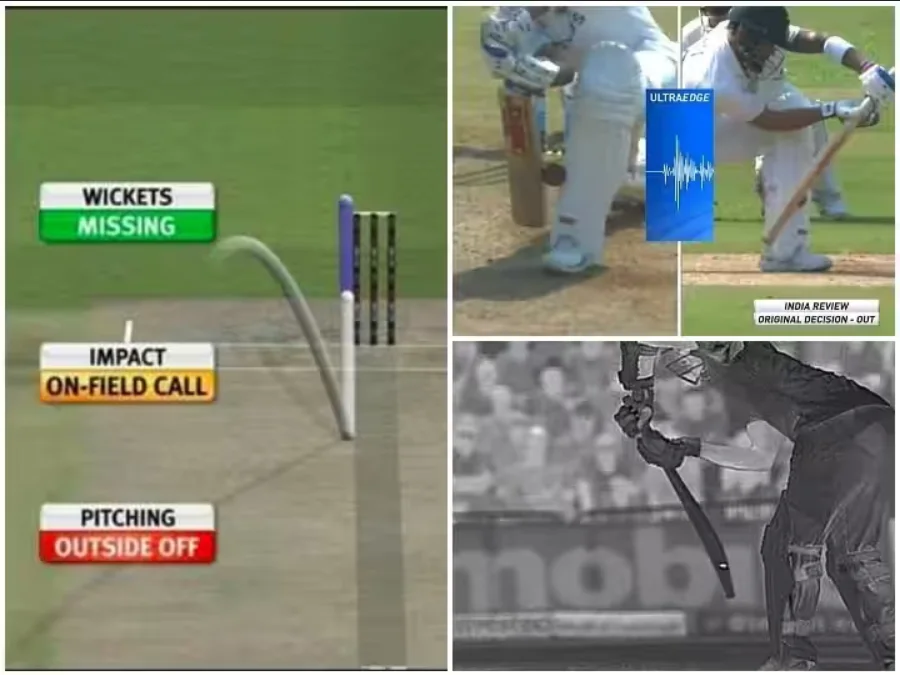DRS Full Form: Everything You Need to Know About the Decision Review System
If you’re a cricket fan, you’ve probably heard of the DRS. It’s a system used in cricket to review umpiring decisions, and it has been a controversial topic since its inception. In this article, we’ll cover everything you need to know about the DRS full form, how it works, and its impact on the game of cricket.
Read Other Full Forms
Introduction
The Decision Review System, commonly known as DRS, is a technological system used in cricket to review umpiring decisions. The system was introduced in 2008 and has since become a vital part of modern cricket. It has been a topic of much debate among cricket fans, players, and experts.

What is DRS?
DRS is a technology-based system that allows cricket teams to challenge on-field umpiring decisions. The system involves the use of various technological components to assist the umpires in making the right decision. DRS was first introduced in 2008, and since then, it has been used in international cricket to varying degrees of success.
How Does DRS Work?
DRS is used to challenge on-field umpiring decisions in a cricket match. The team captain can challenge the umpire’s decision by requesting a review. If the umpire agrees, the decision is reviewed using a set of technological components that make up the DRS system.
The Components of DRS
There are five main technological components that make up the DRS system:
Ball-Tracking Technology
Ball-tracking technology is used to predict the path of the ball after it hits the batsman’s pads. It is used to determine whether the ball would have gone on to hit the stumps or not.
Hawkeye
Hawkeye is a computer-based system that uses six cameras to track the ball’s trajectory. It is used to determine whether the ball hit the bat or pad before being caught by the wicketkeeper or slip fielder.
Snickometer
Snickometer is a sound-based technology that uses a microphone to detect whether the ball hit the bat or pad before being caught by the wicketkeeper or slip fielder.
Hotspot
Hotspot is an infrared imaging system that detects the heat generated by the ball’s impact on the bat or pad.
Ultra Edge
Ultra Edge is a real-time audio and visual technology that allows umpires to detect the faintest of edges.
The Evolution of DRS
The DRS system has evolved significantly since its inception. Initially, the system was not mandatory, and teams had to agree to use it before the match. However, the system became mandatory in 2011, and since then, it has been used in most international cricket matches.
The Advantages of DRS
DRS has several advantages. First, it helps reduce umpiring errors and ensures a fairer outcome. Second, it adds to the drama and excitement of the game, making it more engaging for fans. Third, it helps umpires make the right decision in cases where they are unsure.
The Disadvantages of DRS
DRS also has some disadvantages. First, it can be misused by teams to waste time or break the momentum of the opposing team. Second, the technology used in DRS is not always 100% accurate, and there have been instances where the decision made by DRS was not in line with what the naked eye saw. Third, not all cricket-playing nations can afford the cost of using DRS, which gives an unfair advantage to the teams that can afford it.
Criticisms of DRS
Despite its advantages, DRS has received criticism from many quarters. Some critics argue that the system is not foolproof and that it can be manipulated by teams. Others have argued that the system has slowed down the game and taken away some of the spontaneity and excitement of the game.
The Future of DRS
The future of DRS looks bright, and the system is expected to evolve even further in the coming years. As technology continues to improve, it is likely that the system will become even more accurate and efficient.
DRS in International Cricket
DRS is currently used in most international cricket matches, although it is not mandatory in all matches. The system has been used in several high-profile matches, including the World Cup and the Ashes.
Conclusion
In conclusion, the Decision Review System, or DRS, has revolutionized the game of cricket. It has helped reduce umpiring errors and made the game fairer for everyone. Despite its shortcomings, DRS has become an integral part of modern cricket and will continue to play a significant role in the game’s future.
Frequently Asked Questions
Q.1 Who introduced the DRS system in cricket?
The DRS system was first introduced by the International Cricket Council (ICC) in 2008.
Q.2 How many components make up the DRS system?
The DRS system comprises five main technological components: ball-tracking technology, Hawkeye, Snickometer, Hotspot, and Ultra Edge.
Q.3 Is DRS mandatory in all cricket matches?
No, DRS is not mandatory in all cricket matches. It is up to the cricket boards to decide whether to use DRS or not.
Q.4 How accurate is the DRS system?
The DRS system is not 100% accurate, but it is significantly more accurate than the naked eye.
Q.5 Is DRS here to stay?
Yes, DRS is here to stay, and it will continue to play a significant role in the game of cricket.

